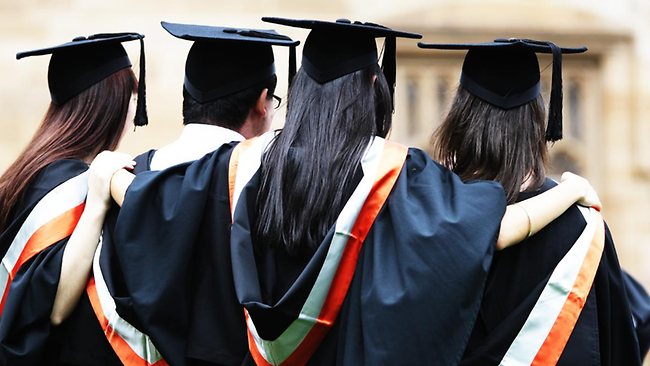accredited college programs see major shifts in the profile of the average student
American writer Rachel Higgins joins Lip today to discuss the changing state of university education, both in terms of rising costs and demographic shifts. Though much of her data comes from U.S. sources, the thrust of her argument — that the experience is changing in meaningful ways for everyone — is just as valid here as it is there, and adds to previous conversations on higher education that have happened across these pages. Rachel works for an education website that allows users to browse through hundreds of accredited degree programs.
***
The United States has seen a host of major changes over the past ten years, most related to a deflating economy. Joblessness is way up, and the quality of life has changed for a lot of people. The demographics of many communities have also shifted, usually towards greater diversity and older average age. Perhaps nowhere are the changes as dramatic as they are on university campuses, though. A university education was once something that only a select few aspired to; it was a privilege for the wealthy and, usually, the white. Since about 2007, though, the profile of the average entering freshman is anything but average. Numbers are way up, with women, minorities, and those from economically disadvantaged backgrounds making up a fast-growing share. The importance of a college degree in a down economy is part of the root cause. A wider array of programming and better access to funding is also a big part of it, though.
‘Between 2000 and 2010, enrollment increased 37 percent, from 15.3 million to 21.0 million’ students, the United States Department of Education’s National Center for Education Statistics reported at the start of the 2011-2012 school year. Nearly half of those who are traditionally considered “college aged” during this period were enrolling, the report said—a dramatic shift from prior years, not to mention prior generations. The enrolment percentages of students over 25 also increased, the Center said, particularly where graduate education was concerned. These numbers suggest that more people than ever before are valuing university education, and are finding ways to prioritise learning.
These changes are in no way unique to the United States. According to the Organization for Economic Cooperation and Development, more students than ever before are enrolling in university studies from all corners of the world. Europe’s numbers largely mirror those of the United States. Many of the most dramatic enrolment spikes are found in countries traditionally viewed as “developing,” however, due in large part to increased governmental focus on higher learning and the establishment of more universities in these parts of the world. ‘Huge expansion of higher education in developing countries such as China and Brazil means that the balance of the world’s college graduates is now shifting from North America and Europe to the world’s emerging economies, especially those in Asia,’ World Education Services said in summarising the OECD’s findings.
The economy is one of the biggest drivers of these numbers, for better or worse. In the developing world, government policies and funding make higher education more attractive, not to mention more attainable. In the U.S. and much of Europe, depressed conditions mean that an education is more important than ever before. Getting an education is one of the best ways for students in these climates to better their prospects—and in many cases, put off the inevitable by “waiting out the storm,” as it were.
College in a time of economic hardship is not always all it’s cracked up to be, though. In most cases, the costs have actually gone up, driven by inflation and shrinking endowments, among other things. This means that more students than ever before are seeking outside financing. Most of this comes in the form of grants and loans.
‘Of the 3.3 million full-time, first-time undergraduate students attending institutions that participate in the federal student aid program during the 2009-10 academic year, about 82 percent received financial aid compared to 79 percent the previous year,’ Education Week reported in early 2012. ‘Student loan borrowing increased from 51 percent to 53 percent for full-time, first-time undergraduate students.’ This would not be so concerning if students were able to consistently and effectively pay this money back. Increasingly, however, these debts are creating economic turmoil all their own, creating what many pundits are calling a veritable debt crisis.
There are many cultural advantages to an educated population, and the boom in college enrolments should be seen as encouraging. It is, on the surface. The increases in women and minorities are particularly praiseworthy. Unless something can be done about how education is funded, however, the bubble may be just that—a fragile, temporary growth.
By Rachel Higgins
Do you love independent media? Can’t get enough of intelligent, thoughtful feminist content? Want to see writers actually get PAID for their work? Please donate to Lip through Pozible today, and help keep the mag alive!


